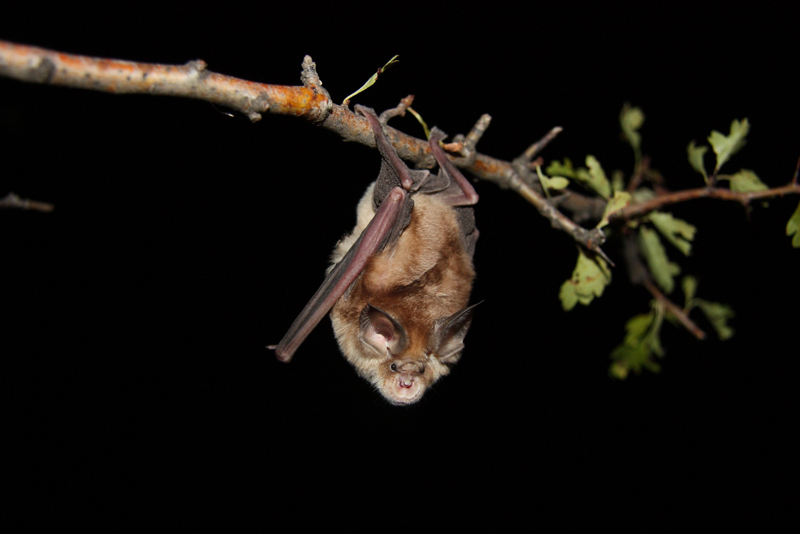Mehely’s horseshoe bat: Red Data Book of Armenia

Horseshoe bats - Rhinolophidae
Status. Listed in the IUCN Red List of Threatened Species (ver. 3.1) as Vulnerable VU A4c. According to IUCN criteria categorized as Vulnerable VU B1a+2ab(iii).
Distribution. The South Caucasus represents the easternmost part of the global range. The range spans across Romania, France, Spain, North Africa, Nagorno Karabakh, Georgia, Azerbaijan.
Distribution in Armenia. Originally recorded in 1945 in the Artsvanist village, Martuni district. In total, the range encompasses the area from the Goris district’s Khndzoresk village westwards to Armavir town, northwards to Yerevan city and further to the Ijevan district, Tavush Province.
Habitats. Caves, grottos, temples, ruins, cellars, tunnels and mines. These bats can be found in both forests and semi–deserts. The presence of water bodies is essential.
Biological traits. Active in dark time. The only baby is born in early summer. Feeds on small and middle–sized butterflies, moths, flies and beetles. Sometimes hibernates in summer shelters.
Population size and its trends. At present, only small groups of these bats (3–15 individuals) can be found in the vicinities of Yerevan (Karmir Blur, Jrvezh) and upstream the Hrazdan River to the Meghradzor village, Kotayk Province. The population experiences a strong decline, with only singular individuals surviving in some sites (Karmir Blur, Magili, Chaikend).
Major threats. Human visitations to caves during the breeding, rearing and wintering seasons. Reconstruction and destruction of churches, buildings, bridges or mines also threaten the survival of these bats.
Conservation measures. Some caves are included to the list of natural monuments. The Magili Cave in the Noravank Canyon, Eghegnadzor district is closed to human visitations. Bat habitats should be granted the status of sanctuaries and closed to human visitations.
Suggestions
 The Ministry of Environment sent a letter international partners to draw their attention to the real danger of environmental disasters as a result of Azerbaijan's large-scale aggression towards the territory of Armenia
The Ministry of Environment sent a letter international partners to draw their attention to the real danger of environmental disasters as a result of Azerbaijan's large-scale aggression towards the territory of Armenia
 Vicia pisiformis: Red Data Book of Armenia
Vicia pisiformis: Red Data Book of Armenia
 Vavilovia formosa: Red Data Book of Armenia
Vavilovia formosa: Red Data Book of Armenia
 Trigonella capitata: Red Data Book of Armenia
Trigonella capitata: Red Data Book of Armenia
 Trigonella astroides: Red Data Book of Armenia
Trigonella astroides: Red Data Book of Armenia












